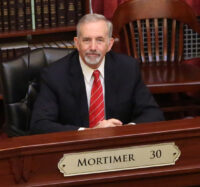The pool of certified teachers in Idaho has dwindled since 2010 — and districts throughout the state are feeling the effects.
“I would not say it’s a teacher shortage we are experiencing — it’s a teacher famine,” said Madison School District assistant superintendent Randy Lords.
Certified teachers began leaving the classroom at an increasing rate in 2009-10, even as the number of those seeking Idaho teaching certificates began dwindling. By 2013-14, the number of teachers leaving Idaho classrooms (1,979) more than doubled the number of teachers seeking certification (934), according to State Board of Education data.
Experts and data suggest that teachers are leaving the profession not only because of pay, but because of rising health care costs, low morale and declines in the number of out-of-state personnel seeking Idaho teaching certificates.
Teachers who left the classroom, left the state and retired compared with the number of those newly certified:
2009-10 — 1,380 left; 2,001 certified
2010-11 — 1,610 left; 1,821 certified
2011-12 — 2,401 left; 1,883 certified
2012-13 — 2,199 left; 1,775 certified
2013-14 — 1,979 left; 934 certified
East Idaho superintendents met with state lawmakers in May to share their hiring concerns. Senate Education Committee Chairman Dean Mortimer, R-Idaho Falls, attended the meeting. The superintendents said the pool of teachers is dwindling because of rising health care costs, rural staffing issues and better benefits in Wyoming.

“Everyone in that room was just shaking their head,” said West Jefferson superintendent Dwight Richins.
The West Jefferson School District is located in Terreton and last school year enrolled about 642 students.
“It’s amazing how hard it’s getting just to find teachers,” Richins added.
It’s a statewide issue
Districts of all sizes across the state are struggling to hire teachers, according to Patti Mortensen, assistant professor of school psychology and educational leadership at Idaho State University.
Mortensen surveyed 115 Idaho school districts last fall, inquiring about hard-to-fill positions. The 72 respondents from all six regions revealed the following:
- Sixty-eight (83 percent) of districts reported that qualified candidate pools for certified teachers were “inadequate.”
- Only 11 of 70 districts (15 percent) were able to hire fully certified staff for all positions.
- Forty-one of all reporting districts (57 percent) said hiring teachers was “extremely” difficult.
Richins added that the hiring difficulties are intensified in smaller districts like his, which have to compete with growing vacancies in larger surrounding cities – in his case, Rexburg and Idaho Falls.
“They are eating us right up,” Richins said.

Though larger districts tend to attract more candidates because of location and better pay, they also have more vacancies to fill – which is why districts large and small are reporting candidate pool inadequacies.
On a 2015 nationwide listing of teacher shortages, Idaho ranked No. 2 of 50 states with reported deficiencies in 14 of 20 subject areas, according to the U.S. Department of Education. The only state ranking higher – West Virginia – reported shortages in 15 of 20 subject areas.
“Teacher shortage is pervasive and widespread in Idaho,” Mortensen said.
Population growth in Idaho could also be contributing to superintendents’ hiring woes, as more teachers are needed to accommodate more students in classrooms across the state. Idaho’s s population grew 1.2 percent between mid-2014 and mid-2015 – “the 12th strongest increase among all states and four-tenths of a percentage point ahead of the national growth rate,” according to the Idaho Department of Labor. The state’s population was 1,654,930 as of July 1, an estimated increase of more than 20,000, slightly down from a 1.4 percent increase of 22,000 in 2014.
But neither the State Department of Education, the State Board of Education nor the Idaho Education Association track the number of needed certified positions on any given year in Idaho, so it’s hard to say how population growth is contributing to the demand of certified teachers throughout the state.
A dying influx of teachers
The shortages also come at a time of declining enrollment at Idaho’s colleges of education.
In 2009, 8,393 students entered Idaho public, private and alternative programs aimed at training teachers. In 2013, that number shrunk to 5,397 – a 35 percent dip since the recession started, according to the State Board of Education.

“We have certainly lamented the fact that we are getting fewer teachers here,” said Christina Linder, associate dean at Idaho State University’s college of education.
ISU now staffs a full-time employee, charged solely with recruiting future teachers from area high schools and establishing clubs where students can meet to learn more about the profession.
The state has adopted an alternative route to certification in order to supplement the dwindling number of incoming teachers. The American Board for Certification of Teacher Excellence (ABCTE) allows those with a bachelor’s degree to pursue a fast track to state certification. (Click here to see how ABCTE contributes to teacher certifications in Idaho.)
Even with ABCTE, the number of statewide certifications fell 47 percent (from 1,775 to 934) in 2013-14, according to the State Board of Education.
The influx of newly certified teachers has also been slowed by steep declines in the number of out-of-state teachers seeking Idaho teaching certificates. In 2007-08, 898 out-of-state teachers earned an Idaho teaching certificate. By 2013-14, that number dwindled to 68.
Teaching certificates issued to teachers living outside of Idaho from 2007 to 2014:
2007-08: 898
2008-09: 838
2009-10: 661
2010-11: 633
2011-12: 450
2012-13: 460
2013-14: 68
Legislative solutions
The Legislature has supported the 2013 recommendations from Gov. Butch Otter’s education task force, which were created to provide Idaho with an unprecedented five-year plan to improve K-12 education and teacher satisfaction. One of those recommendations — the estimated $125 million dollar career ladder — increases teacher pay. Another piece — the state’s leadership premium package — designates additional money for hard-to-fill positions.
The career ladder raises teacher pay, but the majority of allocated funds boosts the lower end of the pay scale. The state’s minimum teacher salary will increase from $31,750 to $37,000 in 2019-20. The state will send school districts a maximum of $50,000 for high-end salaries in 2019-20 — just $3,000 more than what was allocated in 2015.

The state’s leadership premium salary bonus program is targeted at retention. But implementation problems have stalled the effectiveness of the premiums — districts across the state have failed to accurately track the allotted money, and the premiums can create friction between teachers, Mortimer said – especially if used to incentivize new personnel.
“Paying new teachers more simply doesn’t go over well with teachers who have been working in a district for longer periods of time,” Mortimer said.
Health care and salary issues
East Idaho superintendents list rising health care premiums as the top factor resulting in turnover.
Health care costs have continued to rise during the recession. Blue Cross of Idaho, the state’s largest insurer of teachers and their family members, increased its rates 16.6 percent in 2015, according to a report by the Idaho Statesman’s Audrey Dutton.
Districts have tried to supplement health care costs for their employees, but the rise has been too steep as of late. In many districts, employees covered by district-sponsored healthcare usually pay out-of-pocket premiums for family members.
“The cost of health insurance is becoming onerous,” Mortimer said. “Something needs to be done to make it more affordable and equitable here.”
He added it was “too early” to provide specific proposals for ways to improve current health care costs for state educators.
Out-of-state competition
Though the number of certified teachers leaving Idaho to work at other educational institutions declined from 2008 to 2013, East Idaho superintendents say better pay and benefits in Wyoming make it difficult to keep educators on staff.
In 2011, Wyoming ranked No. 4 on a nationwide list of per-pupil spending, according to the U.S Census Bureau. Idaho turned up No. 50 on the same list – for the sixth straight year.
Wyoming ranked No. 5 for benefits in 2011 ($2,410), according to the same study; Idaho ranked No. 46 ($973).
“Even if we could compete with the salaries (Wyoming) offers, the benefits, like health insurance, are impossible to beat,” said West Jefferson’s Richins, who lost a principal to Wyoming earlier this year because of “better insurance” – and a $9,000 annual salary increase.
Idaho Education News reported last year that North Idaho districts have also been scurrying to keep teachers from fleeing for higher-paying jobs in Washington.
Waning morale
ISU’s Linder said a negative public perception of the profession is also playing a role in teacher vacancies.
“Teachers are feeling oppressed,” she said, adding that “heavy-handed policies,” with an emphasis on test scores, have “taken the joy and freedom out of teaching.”

Idaho Education Association president Penni Cyr pointed to teacher morale, adding that Idaho educators have little say in the decisions that affect them the most.
Cyr also took issue with the state’s endeavors to restore education funding to “pre-recession levels,” which she says are inadequate because of inflation and other rising costs.
“It’s not 2008 anymore – it’s 2016,” she said.
Mortimer said: “We won’t see any major changes until the next (legislative) session.”
